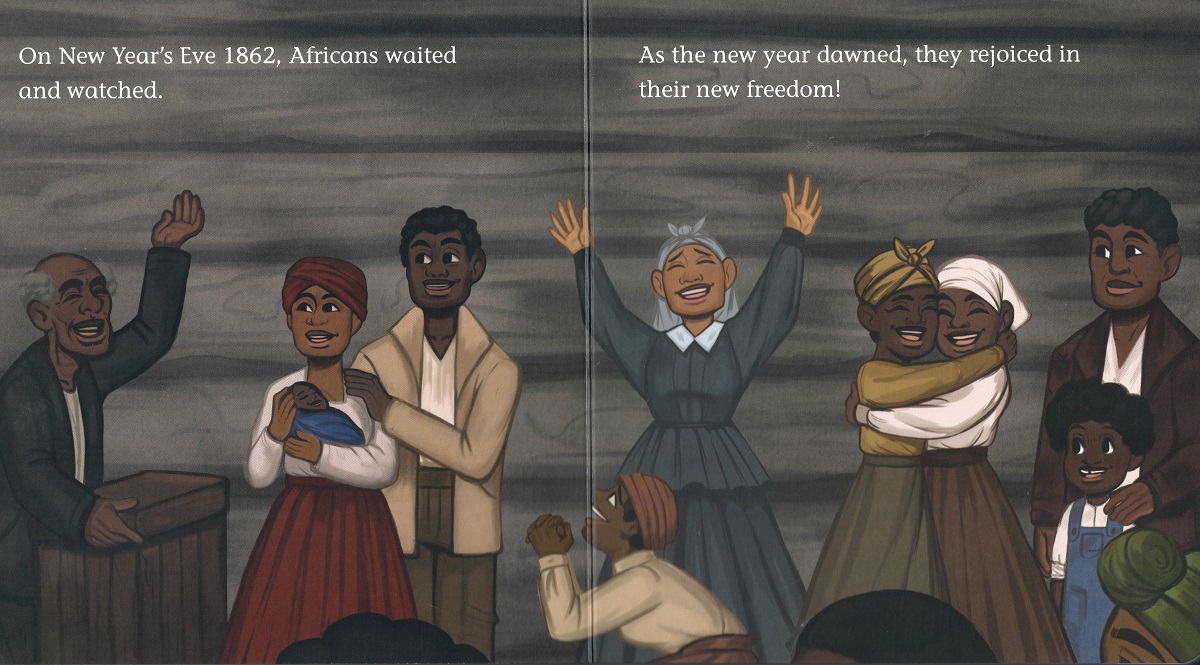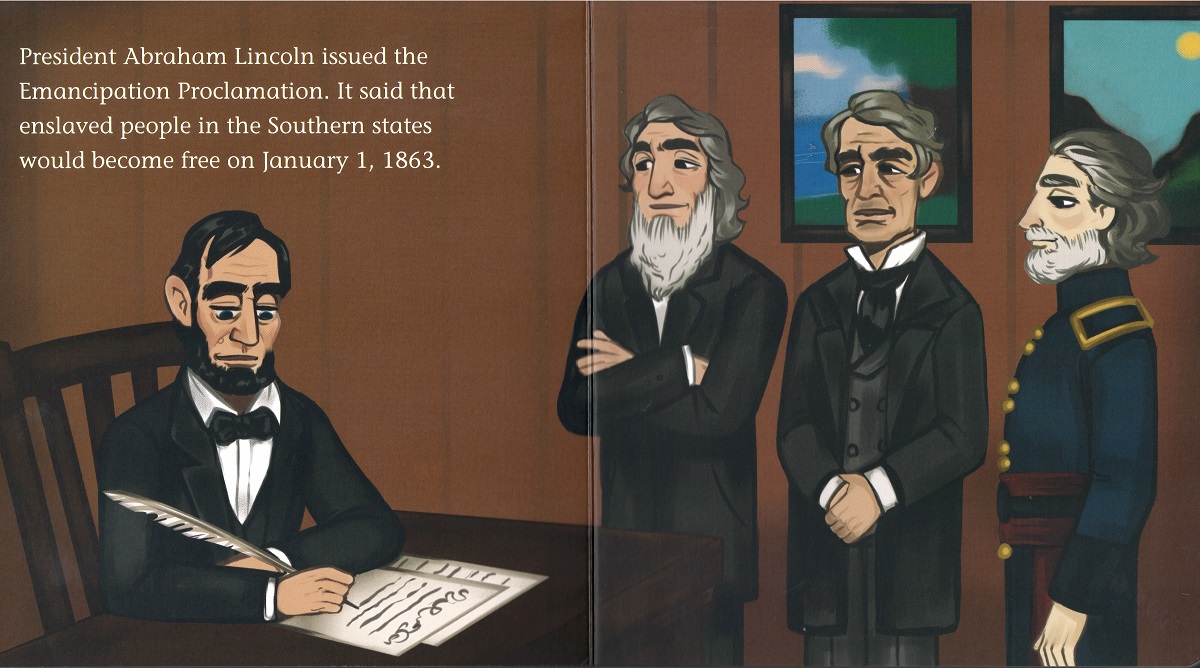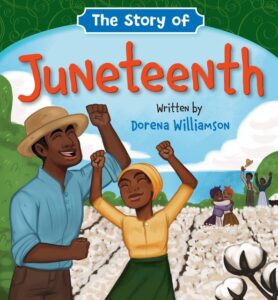Reviewed by Brad Manker
Review Source: Teaching for Change
Book Author: Dorena Williamson
The Story of Juneteenth presents an over-simplified explanation of the historic anniversary. While the author’s intent is admirable, this board book follows the dominant, accepted narrative about emancipation and ignores the sacrifices and courage of Black Americans, largely depicting them as passive actors.
This problematic account makes a hero of two white men — Abraham Lincoln (who issued the Emancipation Proclamation only after there was public support to do so) and Union General Gordon Granger (whose connection to the Juneteenth order is never stated in the book and whose contribution to Juneteenth has been exaggerated throughout time). In addition, it omits the contributions of Black soldiers, brave African Americans who fought for emancipation, and the grassroots movement leaders of later years who lobbied for a national holiday.
Inaccurate language is extensive, as well. Here are a few examples:
- Juneteenth was not “the day when the last enslaved Africans in the United States became free,” but rather the day some enslaved Africans learned they were free and on equal legal footing with white Texans. Black Americans throughout the southern states found out they were free at other times, so emancipation dates vary by state. And since the national, underground communications network among enslaved people was strong, it was often not a case of Black people learning that they were free as much as white people learning that the army would enforce it.
- Stating that “long ago, the first enslaved Africans were brought to America” dilutes the horrific nature of the Middle Passage. Similarly, that enslaved people had to “work hard, but. . . were not paid” and “had to do whatever they were told” is a whitewashed explanation of slavery in the United States.

- The author claims that on New Years’ Eve in 1862, “Africans” waited and watched.” During the U.S. Civil War (and throughout U.S. history), Black Americans were anything but passive about their civil rights and freedom. In truth, as W. E. B. Du Bois and others have explained, the Union army won the Civil War because of a general strike by African Americans in the South and the role of Black regiments once they were allowed to join. Readers can learn more in the podcast by historian Kidada Williams, Seizing Freedom.
- The Emancipation Proclamation did not say that “enslaved people in the Southern States would become free on January 1, 1863.” It omitted the border states, where slavery was still legal.

Additionally, the author asserts that people around the world celebrate Juneteenth, but I found no evidence (apart from expatriates possibly holding private celebrations) that Juneteenth is celebrated in any other country, as it is a uniquely U.S. historical phenomenon.
Recommended Titles
There have been several board and picture books published in the last three decades to explain and commemorate Juneteenth. All are by African American authors and illustrators. We recommend reading the following with children, as they provide a more honest, accurate, and nuanced description of the holiday.
All Different Now: Juneteenth, the First Day of Freedom by Angela Johnson and illustrated by E. B. Lewis (2014)
Free at Last: A Juneteenth Poem by Sojourner Kincaid Rolle and illustrated by Alex Bostic (2022)
Juneteenth for Mazie written and illustrated by Floyd Cooper (2021)
Juneteenth Jamboree, by Carole Boston Weatherford and illustrated by Yvonne Buchanan (1995)
You can find more information about Juneteenth with teaching resources from the Zinn Education Project.
Brad Manker serves as a fellow with Teaching for Change. He is an educator, curriculum designer, and independent researcher with a background in elementary education.

The Story of Juneteenth by Dorena Williamson
Published by WorthyKids on 2022
Genres: Holidays and Celebrations
Pages: 24
Reading Level: Grade K, Grades 1-2
ISBN: 9781546002161
Review Source: Teaching for Change
Publisher's Synopsis: Introduce little learners to the Juneteenth holiday with this 250-word board book about its origins and traditions.
What are the origins of America's newest national holiday? With simple, age-appropriate language and colorful illustrations, this little board book introduces children to the events of June 19, 1865, when Union General Gordon Granger arrived in Galveston, Texas, to inform the people of Texas that all enslaved people were declared free and the Civil War had ended. The book also connects those events to today's celebrations. Thoroughly researched and historically accurate, The Story of Juneteenth distills a pivotal moment in U.S. history and creates an opportunity for further conversation between parent or caregiver and child.

Leave a Reply